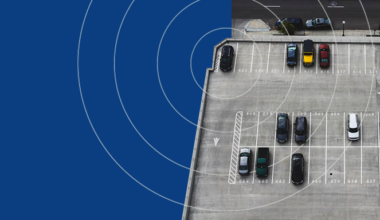The popularity of the flexible workspace is soaring. With the growing demand for hybrid working, companies are reimagining their office experience.
Companies are making the move from a culture of fixed office usage to a more fluid, shared approach. For many this transition is focusing on bricks and mortar. Less desks, more collaboration spaces etc.
Yet, with flexibility comes complexity. Managing workspaces used to be a lot easier. The volume of staff who’d be in the office everyday was pretty predictable. This meant that businesses could have fixed plans to cater for employee needs.
The growth of flexible working has changed this forever. Companies now need ways of decentralising their workspace management. So that employees can avail of the workplace experience they crave in an on-demand manner.
This is where flexible workspace software comes in. To ensure the transition is as easy as possible for employer and employees, what softwares does a company need?
Let’s have a look.
Do you want a specialist product or a one stop shop?
Before we jump into the meaty stuff, just a word of warning. The pandemic has obviously seen an explosion in demand for flexible management software.
As you will see there are four main components to managing a hybrid office.
- Workspace (desk-booking, meeting rooms etc.)
- Parking (space-booking, real-time availability etc.)
- Experience (community, catering etc.)
- Visitors (contractors, guests etc.)
The market is currently split into two camps. There are those who are trying to build a one stop shop which captures all of the above in one place for businesses. The others are looking to specialise in their segment and integrate with market leaders in the other verticals.
Which should you go for? It really depends on what is a bigger priority, quality or value.
A lot of the one stop shop products provide very basic solutions which can help manage the modern office. However, there is definitely a touch of buyer beware to be had here. Most of these companies specialized in a particular segment pre-COVID.
They struggled to make significant inroads into their chosen segment. As a result they have broadened their focus with a view to capturing part of what they perceive to be a broader market.
This all sounds ok except for one key fact. Each and every vertical requires a beefy product which is backboned by years of expertise.
A lot of buyers who buy a catch all software, realize very quickly that they are actually going to need to supplement this with more softwares.
This can be a very expensive mistake to make.
From experience, the best buyers are going in a slightly different direction. They are sourcing the best products for each segment. They are then tapping into the impressive network of integrations which allows the leading products to work in tandem.
A quick look across the software landscape, tells us that integrations are the future. Please save yourself the hassle and avoid any software vendor who seems reluctant to integrate.
Ok so let’s dive a bit deeper into each vertical.
Workspace Management Software
Probably the first things which springs to mind. Workspace management solutions help manage things like:
– Desk booking
– Room booking
– Floor plans
– Contact tracing
When sourcing a solution, the key features you should look out for are
Make sure any product you require can sync in with any on-site display screens you need which show floor or room occupancy levels.
The level of complexity around desk booking and room booking is a lot simpler than a lot of the other verticals. Although make sure to source a product with good real-time availability and pre-booking features. While robust data & insights is a must to help you maintain an optimum desk sharing ratio.
Finding a good solution is quite easy but market leaders include Envoy & Robin Powered.
Parking Management Software
Many employers had started to embrace hybrid working concepts pre-pandemic when it came to the office experience. Yet, employee parking management had experienced very little change.
According to the State of Employee Parking 2021, 72% of employers designated some or all of their parking spaces to staff. This means that fixed parking spaces were allocated to key employees.
In a world, where employees might only be in the office a few days a week, it no longer makes sense to allocate parking on a fixed basis.
This is where employee parking management software comes into things. Key features to look out for include:
– Real-time availability
– Booking & allocation
– Digitized entry & exit
– Violation management
– Automated parking comms
Finding a good parking management software can be tough. A lot of desk booking softwares try to bolt on car parks through their systems. This is a recipe for disaster, managing a car park is very different from managing desks.
Think about it. It is much easier to move a rogue person than a rogue car. All the time we see companies coming to us who have tried to manage parking with a workspace management software. They’ve often got themselves into deeper issues than they started with.
Optimize your parking management operations with software
Find out how Wayleadr's parking mnagement software can help you reduce costs and enhance your employee experience
Get a DemoDue to the nature of commuting, make sure that vendors have very good mobile apps. This is probably the most important segment when it comes to integrations.
You will want your parking management software to integrate with parking barriers, internal comms platforms, other mobility softwares as well as all other flexible workspace solutions.
I’m obviously biased around the best product here. Fortunately, I can move past personal preference and let you know the undisputed market leader here is Wayleadr.com. The software which is trusted by employers like eBay, Sanofi & L’Oreal.
Recently leading software review website Capterra recognized Wayleadr.com’s pioneering work in this field with two awards.
– Best Value Product (Space Management)
– Easiest Product To Use (Space Management)
Employee Experience Software
This vertical really depends on the size of your office. Some smaller companies can probably manage a lot of this manually. Bigger companies will find the employee experience app as a real hub.
Key things you want from the solution include:
– Catering services
– Events & community notices
– Local service offerings
– Energy awareness
Basically you are looking to create a hub for all the cool and fun stuff. Creating a focal point to attract people back to the office.
Leading vendors include Equiem and Office App.
Visitor Management Software
Flexible offices increase the amounts of comings and goings. People are dropping in at any time, often just for an hour or two. Often when they are coming to the office, they are coming with a purpose.
To meet someone, to collect something etc. This is placing more pressure than ever on front desks to manage all the comings and goings.
This is where a strong visitor management software comes into the mix. Key features to look out for include:
– Visual verification
– Automated arrival alerts
– Unique access codes
A key factor here is the ability to integrate with turnstiles if they are present in your office.
Key vendors in this space include ProxyClick & SwipedOn.
Join industry leaders from companies like Sanofi, Indeed.com & CBRE, schedule a demo with Wayleadr.com today and solve your parking problems in the click of a button.



